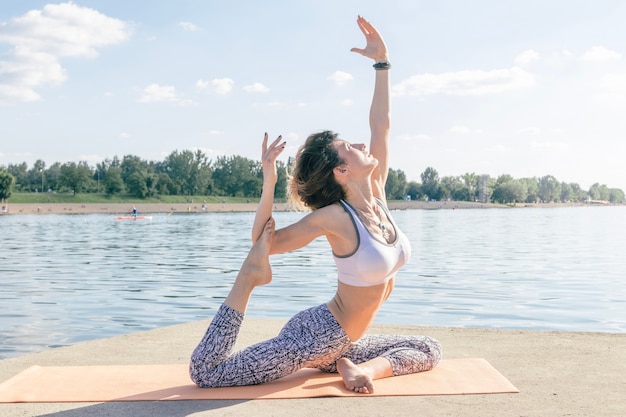
A yoga body isn’t just about flexible limbs; it can also boost your memory, heart, and bone health. People in the UK are spending an impressive £790 million annually on yoga classes and mats.
Yoga, despite getting quirkier with variations like naked yoga or even dog yoga, is gaining scientific backing for its health benefits. For instance, UCLA research showed that a three-month course of yoga and meditation was more effective than traditional memory exercises in reducing age-related brain changes and improving sleep in breast cancer survivors.
Lucy Edge, a former advertising executive, turned to yoga instead of antidepressants during a deep depression. After learning yoga in India, she returned happier and more content. She has since written books about yoga and created Yoga Meds to share its proven benefits.
Yoga has been found to enhance memory better than exercises like crossword puzzles or Sudoku. A UCLA study involving 25 adults over 55 showed that a 12-week course of yoga and meditation not only improved their spatial and visual memories but also reduced depression and anxiety more than memory exercises.
You don’t need to spend hours on headstands. The study participants did one hour of Kundalini yoga per week, which combines breathing techniques, meditation, and chanting. They also practiced 20 minutes of Kirtan Kriya daily, involving chanting, hand movements, and visualizing light.
Yoga is also excellent for heart health. A 2014 study in the European Journal of Preventative Cardiology suggested that yoga could lower heart disease risk as much as conventional exercises like brisk walking. It helps manage stress, a major contributor to heart disease, by lowering stress hormones that raise blood pressure and heart rate.
For heart health, try gentle yoga poses designed by Charlotte Watts or practice Restorative yoga, which involves supported postures held for up to 12 minutes, giving your nervous system a break.
Yoga is beneficial for back pain too. Sarah Shone, a physiotherapist and yoga teacher, developed yoga classes included in a rehabilitation program, with 87% of participants reporting pain reduction.
Yoga also strengthens pelvic floor muscles, helping to prevent incontinence, and is weight-bearing, which can increase bone density. To start, choose a gentle style like Hatha or Iyengar yoga, and inform your teacher about any health issues.
Investing in a good yoga mat is crucial. Consider where you’ll use it, if you need to carry it daily, your height, and any joint issues. A thicker mat can offer more comfort and joint protection.
One recommended mat is the eye-catching Elephant Cork Yoga mat from Valka Yoga. Eco-friendly, durable, and 3mm thick, it provides excellent padding and is antimicrobial and odor-resistant. It comes with a carry strap and offers a 15-day money-back guarantee and a one-year warranty.
For those who need help with flexibility, yoga blocks can make poses easier by providing extra length and stability. The Valka cork yoga block, for example, is stable and offers good grip, despite being heavier than foam blocks.
Different styles of yoga can suit various needs:
– For relaxation and support, try Yin or Restorative yoga, often done with props under soft lighting.
– For an energetic practice that links movements to breath, go for Vinyasa Flow, which can be adapted for beginners.
– Iyengar yoga focuses on alignment and uses props to help with poses, ideal for beginners.
– Anusara yoga combines alignment with flowing movements and upbeat music.
– Yoga Therapy is tailored for those recovering from injury or illness, taught by trained instructors.
Lucy Edge’s latest book, “Down Dog Billionaire,” is available on Amazon.




